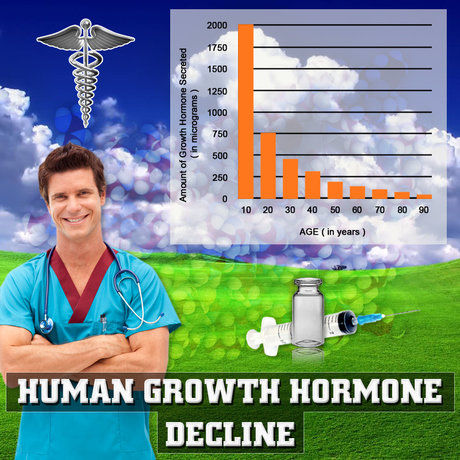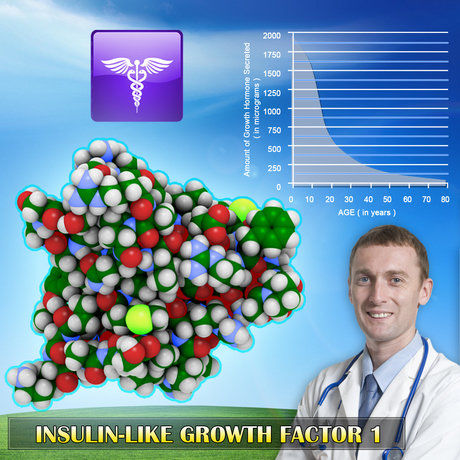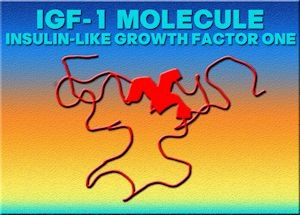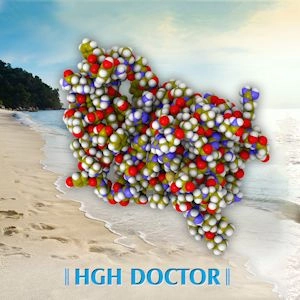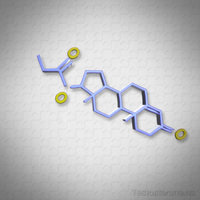Abstract:
Peptide-based medicines have received a lot of interest due to their potential for controlling hormone levels and enhancing general health. In this thorough study paper, we investigate the properties, modes of action, advantages, and therapeutic uses of three well-known peptides: Ipamorelin, Tesamorelin, and Sermorelin. We also investigate the role of Growth Hormone-Releasing Hormone (GHRH) and Secretagogues in hormone regulation. The study intends to shed light on the growing landscape of these peptide-based therapeutics and their implications for a variety of medical diseases.
Introduction:
Peptides play a pivotal role in hormone regulation, offering a promising avenue for medical interventions. Among the peptides gaining attention are Ipamorelin, Tesamorelin, and Sermorelin, each with distinct properties and applications. Additionally, Growth Hormone-Releasing Hormone (GHRH) and secretagogues are essential components of the endocrine system, impacting hormone release.
This article aims to provide a comprehensive overview of these peptides and their therapeutic potential.
Ipamorelin Peptide:
Ipamorelin is a synthetic peptide known for its role as a Growth Hormone Secretagogue Receptor (GHSR) agonist. It stimulates the release of Growth Hormone (GH) without impacting cortisol levels, making it a safer option. The Ipamorelin benefits include enhanced muscle growth, improved fat metabolism, and potential anti-aging effects. Ipamorelin supplements are being explored for their capacity to optimize hormonal balance.
Ipamorelin Peptide is a novel and powerful synthetic pentapeptide with distinct and selective GH-releasing characteristics. To investigate the effects on longitudinal bone growth rate (LGR), body weight (BW), and GH release, adult female rats were injected s.c. three times daily for 15 days with peptide ipamorelin at various dosages (0, 18, 90, and 450 microg/day). LGR was evaluated after intravital tetracycline labeling on days 0, 6, and 13 by measuring the distance between the fluorescent bands in the proximal tibia metaphysis. Ipamorelin enhanced LGR in a dose-dependent manner, from 42 microm/day in the vehicle group to 44, 50, and 52 microm/day in the treatment groups (P0.0001). BW gain was likewise significantly and dose-dependently affected. [1]
Total IGF-I levels, IGFBPs, or serum indicators of bone production and resorption were not affected by the therapy. The number of tartrate-resistant acid phosphatase-positive multinuclear cells in the tibial metaphysis did not alter substantially in response to therapy. The pituitary response to a provocative intravenous dose of peptide ipamorelin or GHRH revealed that the plasma GH response was modestly decreased (P0.03) after ipamorelin but unaffected after GHRH.
Tesamorelin:
Tesamorelin injection includes peptide gaining prominence for its potential in stimulating GH release. Administered via injection, Tesamorelin has shown promise in addressing GH deficiency in adults. Tesamorelin before-and-after studies reveal improvements in body composition and glucose metabolism. Its therapeutic application extends to conditions like HIV-associated lipodystrophy.
Tesamorelin, marketed as EgriftaTM, was licensed by the US Food and Drug Administration (USFDA) in November 2010 for the treatment of lipodystrophy in HIV-infected patients.
Tesamorelin growth hormone-releasing hormone analog is licensed to treat PLWH central adiposity/lipohypertrophy. Indeed, tesamorelin significantly reduces VAT and improves lipid profiles in PLWH throughout 26-52 weeks of therapy when compared to placebo. [2]
Peptide Sermorelin:
Sermorelin is a peptide therapy that stimulates the production and secretion of GH by the pituitary gland. It is commonly used to address GH deficiency in children and adults. Sermorelin therapy offers numerous benefits, including enhanced muscle mass, improved sleep quality, and potentially reducing the risk of age-related diseases. The peptide Sermorelin has emerged as a valuable tool in anti-aging medicine.
Many age management practitioners regard growth hormone replacement treatment (GHRT) with recombinant human growth hormone (rhGH) as one of the most effective approaches for combating somatic senescence now accessible.
Sermorelin is a peptide hormone with a similar structure to growth hormone-releasing hormone (GHRH). It is generally used to treat children and adults with growth hormone insufficiency. It can also be used to treat various ailments, such as wound healing, fat loss, and muscular growth.
Sermorelin acts by imitating the activity of GHRH and attaching it to brain receptors that cause the production of growth hormone. Sermorelin is not a growth hormone in and of itself; rather, it increases the body's natural growth hormone synthesis.
Growth Hormone-Releasing Hormone (GHRH):
GHRH is a naturally occurring hormone produced by the hypothalamus. It plays a central role in regulating GH release from the pituitary gland. Synthetic forms of GHRH, like Sermorelin, have been developed to address GH deficiencies and enhance GH secretion. GHRH therapy has been a cornerstone in treating pediatric growth disorders and adult GH deficiency.
Data from numerous populations show that both decreased GH and increased VAT appear to contribute to dyslipidemia, increased systemic inflammation & increased cardiovascular risk independently. Reduced basal and pulsatile GH production with unchanged pulse frequency characterizes GH decreases in visceral obesity. Treatment with GH-releasing hormone (GHRH) allows these anomalies to be reversed by boosting endogenous basal and pulsatile GH production without changing pulse frequency. [3]
Secretagogues:
What is Secretagogue - Secretagogues are substances that stimulate the secretion of hormones, including GH. They act on specific receptors, such as GHSR, to trigger hormone release. Understanding secretagogues is essential in the context of hormone regulation. Secretagogues are often used in peptide-based therapies to optimize hormone levels.
Growth hormone secretagogues (GHSs) are a broad word for substances that stimulate the production of growth hormone (GH). GHSs are growth hormone secretagogue receptor (GHS-R) agonists, whose natural ligand is ghrelin, and growth hormone-releasing hormone (GHRH) receptor agonists, to which GHRH binds as a native ligand. In tandem with intensive research to find GHRH, GHS-R, and ghrelin, other GHSs have been created to treat or detect GH insufficiency, which causes growth retardation, gastrointestinal dysfunction, and altered body composition. [4]
Conclusion:
Peptide-based therapies, including Ipamorelin, Tesamorelin, and Sermorelin, hold promise in regulating hormones and addressing various medical conditions. These peptides offer benefits such as muscle growth, improved metabolism, and potential anti-aging effects.
As research progresses, a better knowledge of these peptides and their methods of action will most likely lead to more therapeutic applications and better patient results. Furthermore, further research into the potential of secretagogues in hormone control will add to our understanding of endocrinology and its significance in general health and well-being.
Contact Us For A Fast And Professional Response

- Cheyenne Sermorelin for HGH Deficiency [Last Updated On: April 6th, 2023] [Originally Added On: November 3rd, 2018]
- Milwaukee Sermorelin for HGH Deficiency [Last Updated On: April 19th, 2023] [Originally Added On: November 3rd, 2018]
- Madison Sermorelin for HGH Deficiency [Last Updated On: February 14th, 2023] [Originally Added On: November 3rd, 2018]
- Green Bay Sermorelin for HGH Deficiency [Last Updated On: May 10th, 2023] [Originally Added On: November 3rd, 2018]
- Charleston Sermorelin for HGH Deficiency [Last Updated On: February 26th, 2023] [Originally Added On: November 3rd, 2018]
- Vancouver Sermorelin for HGH Deficiency [Last Updated On: October 2nd, 2023] [Originally Added On: November 3rd, 2018]
- Tacoma Sermorelin for HGH Deficiency [Last Updated On: May 28th, 2023] [Originally Added On: November 3rd, 2018]
- Spokane Sermorelin for HGH Deficiency [Last Updated On: March 23rd, 2023] [Originally Added On: November 3rd, 2018]
- Seattle Sermorelin for HGH Deficiency [Last Updated On: May 16th, 2023] [Originally Added On: November 3rd, 2018]
- Bellevue Sermorelin for HGH Deficiency [Last Updated On: March 6th, 2023] [Originally Added On: November 3rd, 2018]
- Virginia Beach Sermorelin for HGH Deficiency [Last Updated On: March 23rd, 2023] [Originally Added On: November 3rd, 2018]
- Richmond Sermorelin for HGH Deficiency [Last Updated On: April 23rd, 2023] [Originally Added On: November 3rd, 2018]
- Portsmouth Sermorelin for HGH Deficiency [Last Updated On: February 18th, 2023] [Originally Added On: November 3rd, 2018]
- Norfolk Sermorelin for HGH Deficiency [Last Updated On: October 12th, 2023] [Originally Added On: November 3rd, 2018]
- Newport News Sermorelin for HGH Deficiency [Last Updated On: January 7th, 2023] [Originally Added On: November 3rd, 2018]
- Hampton Sermorelin for HGH Deficiency [Last Updated On: April 17th, 2023] [Originally Added On: November 3rd, 2018]
- Chesapeake Sermorelin for HGH Deficiency [Last Updated On: March 27th, 2023] [Originally Added On: November 3rd, 2018]
- Arlington, Virginia Sermorelin for HGH Deficiency [Last Updated On: July 24th, 2023] [Originally Added On: November 3rd, 2018]
- Alexandria Sermorelin for HGH Deficiency [Last Updated On: May 27th, 2023] [Originally Added On: November 3rd, 2018]
- Montpelier Sermorelin for HGH Deficiency [Last Updated On: May 2nd, 2023] [Originally Added On: November 3rd, 2018]
- West Valley City Sermorelin for HGH Deficiency [Last Updated On: December 27th, 2023] [Originally Added On: November 3rd, 2018]
- West Jordan Sermorelin for HGH Deficiency [Last Updated On: April 27th, 2023] [Originally Added On: November 3rd, 2018]
- Salt Lake City Sermorelin for HGH Deficiency [Last Updated On: July 11th, 2023] [Originally Added On: November 3rd, 2018]
- Provo Sermorelin for HGH Deficiency [Last Updated On: March 11th, 2023] [Originally Added On: November 4th, 2018]
- Wichita Falls Sermorelin for HGH Deficiency [Last Updated On: May 26th, 2023] [Originally Added On: November 4th, 2018]
- Waco Sermorelin for HGH Deficiency [Last Updated On: February 19th, 2023] [Originally Added On: November 4th, 2018]
- San Antonio Sermorelin for HGH Deficiency [Last Updated On: November 5th, 2023] [Originally Added On: November 4th, 2018]
- Round Rock Sermorelin for HGH Deficiency [Last Updated On: November 11th, 2023] [Originally Added On: November 4th, 2018]
- Richardson Sermorelin for HGH Deficiency [Last Updated On: February 7th, 2023] [Originally Added On: November 4th, 2018]
- Plano Sermorelin for HGH Deficiency [Last Updated On: July 18th, 2023] [Originally Added On: November 4th, 2018]
- Pasadena Sermorelin for HGH Deficiency [Last Updated On: September 7th, 2023] [Originally Added On: November 4th, 2018]
- Midland Sermorelin for HGH Deficiency [Last Updated On: November 22nd, 2023] [Originally Added On: November 4th, 2018]
- Mesquite Sermorelin for HGH Deficiency [Last Updated On: October 22nd, 2023] [Originally Added On: November 4th, 2018]
- McKinney Sermorelin for HGH Deficiency [Last Updated On: December 21st, 2023] [Originally Added On: November 4th, 2018]
- McAllen Sermorelin for HGH Deficiency [Last Updated On: February 17th, 2023] [Originally Added On: November 4th, 2018]
- Lubbock Sermorelin for HGH Deficiency [Last Updated On: September 10th, 2023] [Originally Added On: November 4th, 2018]
- Lewisville Sermorelin for HGH Deficiency [Last Updated On: September 7th, 2023] [Originally Added On: November 4th, 2018]
- Laredo Sermorelin for HGH Deficiency [Last Updated On: August 10th, 2023] [Originally Added On: November 4th, 2018]
- Killeen Sermorelin for HGH Deficiency [Last Updated On: February 23rd, 2023] [Originally Added On: November 4th, 2018]
- Irving Sermorelin for HGH Deficiency [Last Updated On: April 29th, 2023] [Originally Added On: November 4th, 2018]
- Houston Sermorelin for HGH Deficiency [Last Updated On: October 2nd, 2023] [Originally Added On: November 4th, 2018]
- Grand Prairie Sermorelin for HGH Deficiency [Last Updated On: May 18th, 2023] [Originally Added On: November 4th, 2018]
- Garland Sermorelin for HGH Deficiency [Last Updated On: March 7th, 2023] [Originally Added On: November 4th, 2018]
- Fort Worth Sermorelin for HGH Deficiency [Last Updated On: October 28th, 2023] [Originally Added On: November 4th, 2018]
- El Paso Sermorelin for HGH Deficiency [Last Updated On: January 8th, 2023] [Originally Added On: November 4th, 2018]
- Denton Sermorelin for HGH Deficiency [Last Updated On: February 21st, 2023] [Originally Added On: November 4th, 2018]
- Dallas Sermorelin for HGH Deficiency [Last Updated On: April 30th, 2023] [Originally Added On: November 4th, 2018]
- Corpus Christi Sermorelin for HGH Deficiency [Last Updated On: July 30th, 2023] [Originally Added On: November 4th, 2018]
- Carrollton Sermorelin for HGH Deficiency [Last Updated On: February 4th, 2023] [Originally Added On: November 4th, 2018]
- Brownsville Sermorelin for HGH Deficiency [Last Updated On: April 10th, 2023] [Originally Added On: November 4th, 2018]
- Beaumont Sermorelin for HGH Deficiency [Last Updated On: November 27th, 2023] [Originally Added On: November 4th, 2018]
- Austin Sermorelin for HGH Deficiency [Last Updated On: May 13th, 2023] [Originally Added On: November 4th, 2018]
- Arlington Sermorelin for HGH Deficiency [Last Updated On: April 16th, 2023] [Originally Added On: November 4th, 2018]
- Amarillo Sermorelin for HGH Deficiency [Last Updated On: May 14th, 2023] [Originally Added On: November 4th, 2018]
- Abilene Sermorelin for HGH Deficiency [Last Updated On: December 26th, 2023] [Originally Added On: November 4th, 2018]
- Nashville Sermorelin for HGH Deficiency [Last Updated On: March 16th, 2023] [Originally Added On: November 4th, 2018]
- Murfreesboro Sermorelin for HGH Deficiency [Last Updated On: May 18th, 2023] [Originally Added On: November 4th, 2018]
- Memphis Sermorelin for HGH Deficiency [Last Updated On: November 24th, 2023] [Originally Added On: November 4th, 2018]
- Knoxville Sermorelin for HGH Deficiency [Last Updated On: July 16th, 2023] [Originally Added On: November 4th, 2018]
- Clarksville Sermorelin for HGH Deficiency [Last Updated On: July 14th, 2023] [Originally Added On: November 4th, 2018]
- Chattanooga Sermorelin for HGH Deficiency [Last Updated On: May 15th, 2023] [Originally Added On: November 4th, 2018]
- Sioux Falls Sermorelin for HGH Deficiency [Last Updated On: March 5th, 2023] [Originally Added On: November 4th, 2018]
- Columbia Sermorelin for HGH Deficiency [Last Updated On: April 25th, 2023] [Originally Added On: November 4th, 2018]
- Charleston, South Carolina Sermorelin for HGH Deficiency [Last Updated On: October 13th, 2023] [Originally Added On: November 4th, 2018]
- Providence Sermorelin for HGH Deficiency [Last Updated On: April 23rd, 2023] [Originally Added On: November 4th, 2018]
- Pittsburgh Sermorelin for HGH Deficiency [Last Updated On: November 10th, 2023] [Originally Added On: November 4th, 2018]
- Philadelphia Sermorelin for HGH Deficiency [Last Updated On: May 5th, 2023] [Originally Added On: November 4th, 2018]
- Erie Sermorelin for HGH Deficiency [Last Updated On: August 21st, 2023] [Originally Added On: November 4th, 2018]
- Allentown Sermorelin for HGH Deficiency [Last Updated On: February 2nd, 2023] [Originally Added On: November 4th, 2018]
- Salem Sermorelin for HGH Deficiency [Last Updated On: September 25th, 2023] [Originally Added On: November 4th, 2018]
- Portland Sermorelin for HGH Deficiency [Last Updated On: June 29th, 2023] [Originally Added On: November 4th, 2018]
- Gresham Sermorelin for HGH Deficiency [Last Updated On: March 22nd, 2023] [Originally Added On: November 4th, 2018]
- Eugene Sermorelin for HGH Deficiency [Last Updated On: April 30th, 2023] [Originally Added On: November 4th, 2018]
- Tulsa Sermorelin for HGH Deficiency [Last Updated On: September 18th, 2023] [Originally Added On: November 4th, 2018]
- Oklahoma City Sermorelin for HGH Deficiency [Last Updated On: August 22nd, 2023] [Originally Added On: November 4th, 2018]
- Norman Sermorelin for HGH Deficiency [Last Updated On: March 23rd, 2023] [Originally Added On: November 4th, 2018]
- Toledo Sermorelin for HGH Deficiency [Last Updated On: January 29th, 2023] [Originally Added On: November 4th, 2018]
- Dayton Sermorelin for HGH Deficiency [Last Updated On: July 2nd, 2023] [Originally Added On: November 4th, 2018]
- Columbus, Ohio Sermorelin for HGH Deficiency [Last Updated On: July 25th, 2023] [Originally Added On: November 4th, 2018]
- Cleveland Sermorelin for HGH Deficiency [Last Updated On: April 29th, 2023] [Originally Added On: November 4th, 2018]

